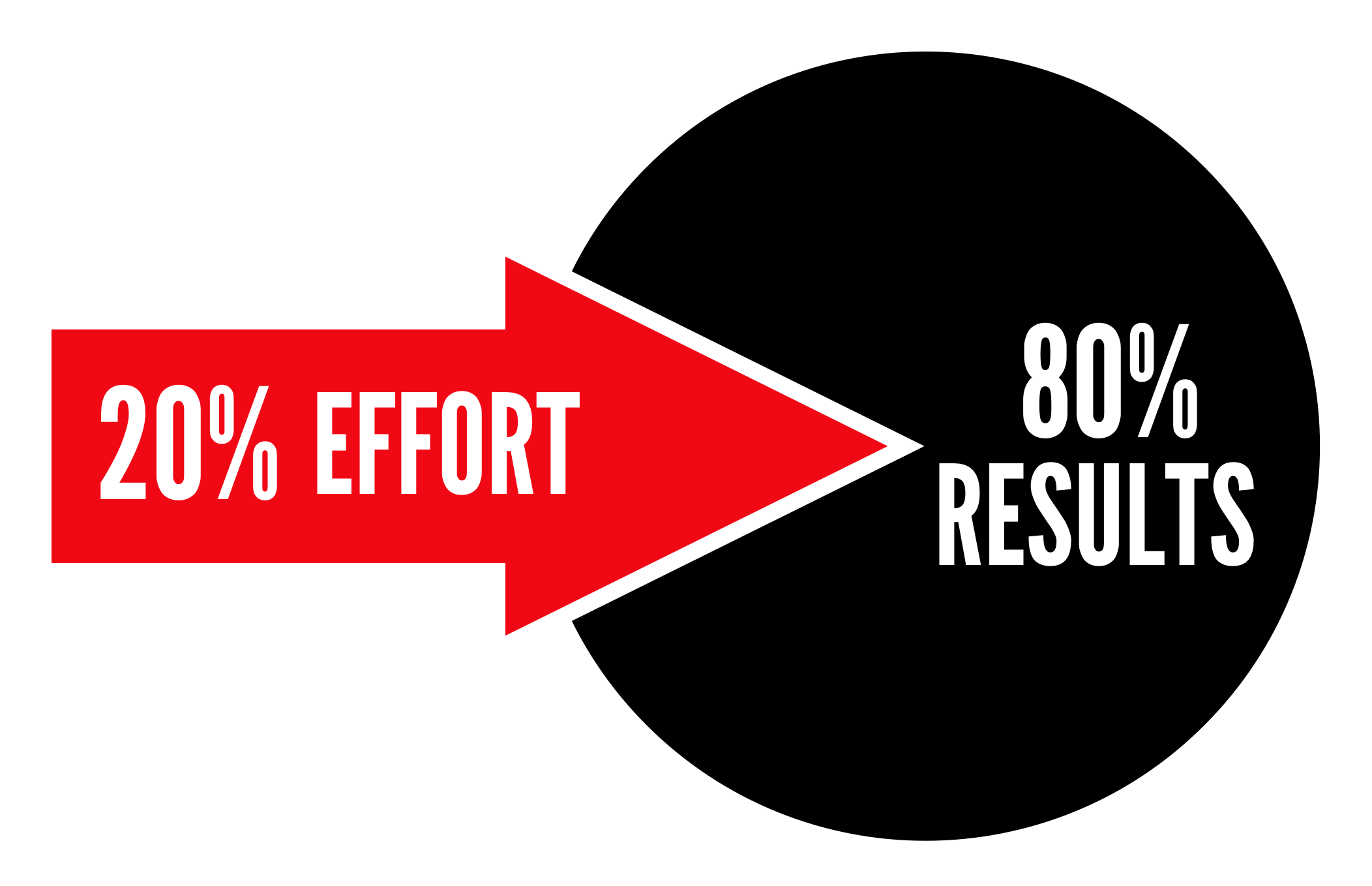Tool #1 - The Pareto Principle
Each week, I will be presenting tools that most leaders use to solve problems, run successful initiatives, and most of all, deliver like a leader.
This week, let’s start out with one of my favorites, The Pareto Principle.
Summary:
The Pareto Principle states that for many outcomes, roughly 80% of consequences come from 20% of causes (the "vital few"). Other names for this principle are the 80/20 rule or the law of the vital few.
History:
Management consultant Joseph M. Juran developed the concept in the context of quality control, and improvement, naming it after Italian economist Vilfredo Pareto, who noted the 80/20 connection while at the University of Lausanne in 1896. Pareto showed that approximately 80% of the land in Italy was owned by 20% of the population.
Mathematically, the 80/20 rule is roughly described by a ‘power-law’ distribution for a particular set of parameters, and many natural phenomena have been shown to exhibit such a distribution. It is an adage of business management that "80% of sales come from 20% of clients".
Application:
Most managers happily service all their clients the same way, not knowing that some clients deliver more income/profit than others. The best way to uncover who are your ‘best’ clients is to use this tool:
Take your entire client list and sort them by income.
Take the top 20% of your clients and total the income.
Take the bottom 80% and also total the income.
Most of the time, you’ll instantly see that the top 20% is close to the bottom 80% of client income.
You’re allowed to move the line around to include/omit clients (this is not an exact science).
Here’s the kicker — look at the bottom 20% of clients and start making decisions about working with them. Do you continue, modify, or stop doing business with them? Most of the time, these are ‘high-attention’ clients that really don’t deliver the profits you’re getting from the top 20%.
What extra services or attention can you pay to the top 20% to retain and grow your bottom line with them? Move your attention from the lower performing clients to the highest-performing clients. Also, look at the mid-section clients and develop behaviors to move them up into the top 20%.
This kind of thinking will subtlely change how you and your team manage client groups. One corporate board that I’m on realized this principle and it revolutionized how they interact and view their clients — and their YOY revenue increased by 20%.
You can also apply the Pareto Principle to team management or project management too. Teach your people to focus on the top 20% of vital tasks that they determined are the most important to their success.
Most of the time, they never focus and treat all tasks the same way. If they truly focus 20% of their time and attention on getting things done the right way, these few top 20% tasks will produce 80% of their success.

